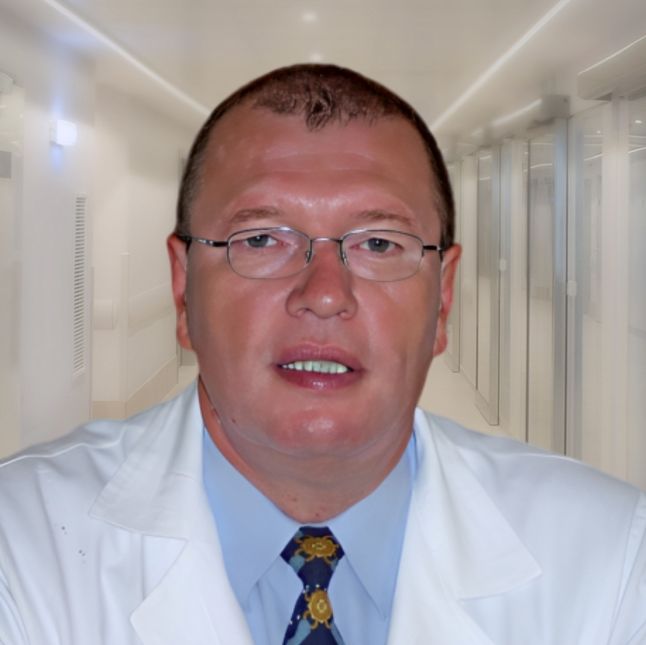 In our institution, we perform numerous urological interventions, specifically related to kidney diseases, using state-of-the-art surgical instruments. Several of these procedures are performed using the so-called endoscopic approach, which involves introducing a tube into the body through a natural body opening or a 1-2 centimeter incision, and performing the intervention with its assistance. This shortens the healing time and results in less discomfort.
In our institution, we perform numerous urological interventions, specifically related to kidney diseases, using state-of-the-art surgical instruments. Several of these procedures are performed using the so-called endoscopic approach, which involves introducing a tube into the body through a natural body opening or a 1-2 centimeter incision, and performing the intervention with its assistance. This shortens the healing time and results in less discomfort.
Ureteral Stone Removal
Painful symptoms associated with renal colic are often caused by kidney stones that have entered the ureter.
In this case, it is necessary to determine the size of the stone to assess whether spontaneous passage is expected or intervention is required.
The likelihood of stone passage, along with spasmolytic and analgesic treatment, is expected up to a size of 5 mm, although stones measuring 2-3 mm can still cause severe pain for several days.
The examination is most commonly performed in a specialized lithotomy position, through the urethra and bladder. By accessing the ureter through the appropriate ureteral orifice, we can navigate the ureter using the instrument introduced through the urethra. Large stones located in the middle part of the ureter are rarely reachable with ureteroscopy. In such cases, the placement of a double-J stent has proven to be beneficial.
In our institution, there is an option to perform a relieving surgical solution, the definitive stone removal with short-term deadlines, under general anesthesia, or with spinal anesthesia.
Percutaneous Nephrolithotomy (PCNL)
PCNL is a minimally invasive procedure in which a nephroscope (nephroscopy) is directly inserted into the renal collecting system through the skin. The nephroscope is a small fiber-optic camera-equipped device through which other instruments, such as graspers, can be introduced into the renal collecting system.
Procedure:
The surgery is generally performed under general anesthesia or epidural anesthesia. During the procedure, the patient lies on the operating table in a prone position with a cushion elevating the kidney.
First, cystoscopy is performed, in which a catheter is inserted through the ureter into the renal collecting system. The renal pelvis is filled with a contrast agent through the catheter, which facilitates accessing the renal collecting system externally through the skin using the nephroscope. The catheter that fills the ureter helps prevent fragmented stone particles from entering the ureter during stone fragmentation.
The nephroscope is inserted through the posterior axillary line, externally accessing the renal collecting system.
Smaller stones can be removed in their entirety. For larger stones, it is possible to fragment them into smaller pieces using an ultrasound or laser lithotripter through the nephroscope.
In the case of staghorn stones, which occupy the entire collecting system, complete removal of all stones during a single session is not expected. In such cases, the remaining stones are treated with extracorporeal shock wave lithotripsy (ESWL).
At the end of the surgery, small stone fragments are removed from the kidney using suction or grasping instruments.
Following the surgery, a catheter is left in the renal collecting system for a few days to drain urine and reduce bleeding from the kidney.
Nephrostomy
Nephrostomy involves the direct drainage of one or both renal pelvises using a catheter or drain. It is usually performed when there is obstruction in the ureter(s) or blockage in the urinary flow into the bladder.
In addition to the above, we perform a wide range of surgeries related to the kidneys, ureters, prostate, and male reproductive systems. After a recovery period of 1-2 days, patients can be discharged to go home.
-
Bilateral ureteral catheter placement and urine selection (under anesthesia)From 422 000 Ft
-
Crushing of kidney stones with a laser and removal with a flexible ureterorenoscopeFrom 1 428 000 Ft
-
Diagnostic surgery of the urethra (URS)From 783 000 Ft
-
Kidney stone removal without crushing with a flexible ureterorenoscopeFrom 1 292 000 Ft
-
Removal of kidney stone (ureteral stone) with dormia basket up to 4 mmFrom 841 000 Ft
-
Renal duct (ureter) stricture dilatation/ruptureFrom 720 000 Ft
-
Renal pelvis diagnostics with a flexible device (Pyeloscopy)From 841 000 Ft
-
Renal stone (ureteral stone) crushing over 5 mm, laser, ultrasound, removalFrom 1 187 000 Ft
-
Transurethral ureteric incision (ureterocele incisio)From 547 000 Ft
-
Unilateral renal (ureter) catheter placement and urine selection (under anesthesia)From 381 000 Ft






